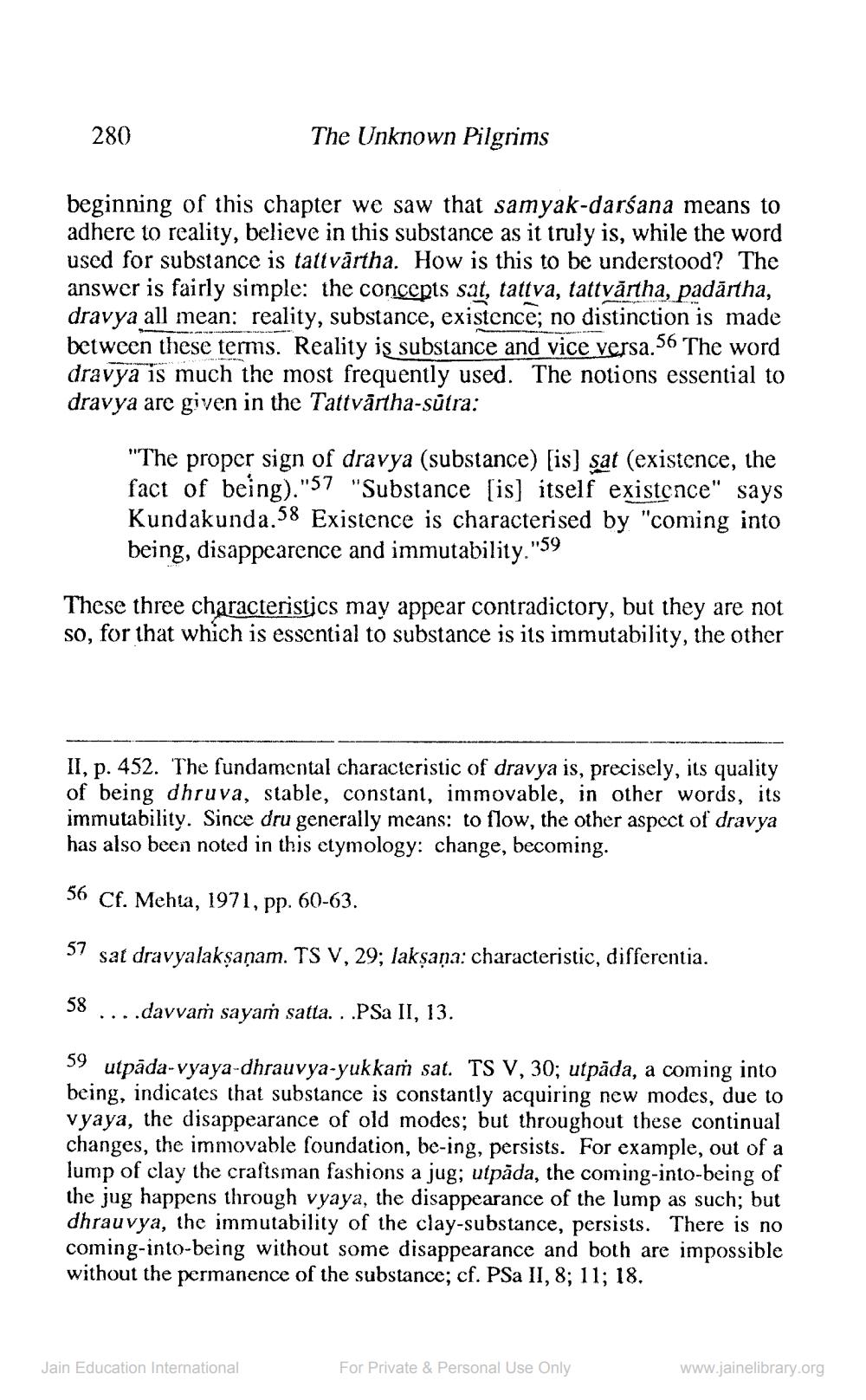________________
280
The Unknown Pilgrims
beginning of this chapter we saw that samyak-darśana means to adhere to reality, believe in this substance as it truly is, while the word used for substance is tattvārtha. How is this to be understood? The answer is fairly simple: the concepts sat, tattva, tattvārtha, padārtha, dravya all mean: reality, substance, existence; no distinction is made between these terms. Reality is substance and vice versa. 56 The word dravya is much the most frequently used. The notions essential to dravya are given in the Tattvārtha-sútra:
"The proper sign of dravya (substance) [is] sat (existence, the fact of being)."57 "Substance [is] itself existence" says Kundakunda.58 Existence is characterised by "coming into being, disappearence and immutability."59
These three characteristics may appear contradictory, but they are not so, for that which is essential to substance is its immutability, the other
II, p. 452. The fundamental characteristic of dravya is, precisely, its quality of being dhruva, stable, constant, immovable, in other words, its immutability. Since dru generally means: to flow, the other aspect of dravya has also been noted in this etymology: change, becoming.
56 Cf. Mehta, 1971, pp. 60-63.
57 sat dravyalaksaņam. TS V, 29; laksana: characteristic, differentia.
58 ....davvam sayaṁ satta. ..PSa II, 13.
59 utpāda-vyaya-dhrauvya-yukkam sat. TS V, 30; utpäda, a coming into being, indicates that substance is constantly acquiring new modes, due to vyaya, the disappearance of old modes; but throughout these continual changes, the immovable foundation, be-ing, persists. For example, out of a lump of clay the craftsman fashions a jug; utpada, the coming-into-being of the jug happens through vyaya, the disappearance of the lump as such; but dhrauvya, the immutability of the clay-substance, persists. There is no coming-into-being without some disappearance and both are impossible without the permanence of the substance; cf. PSa II, 8; 11; 18.
Jain Education International
For Private & Personal Use Only
www.jainelibrary.org




